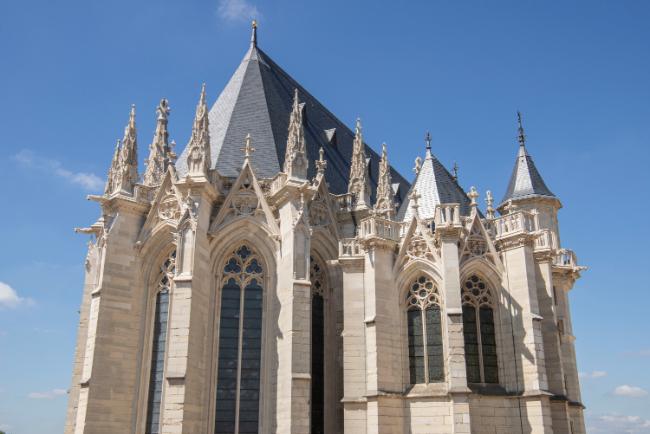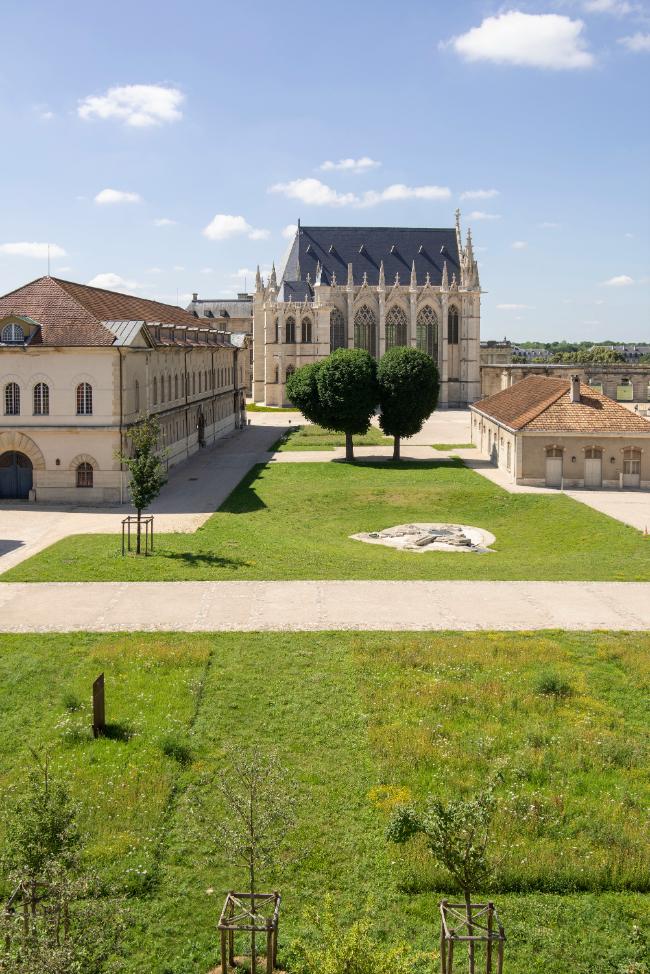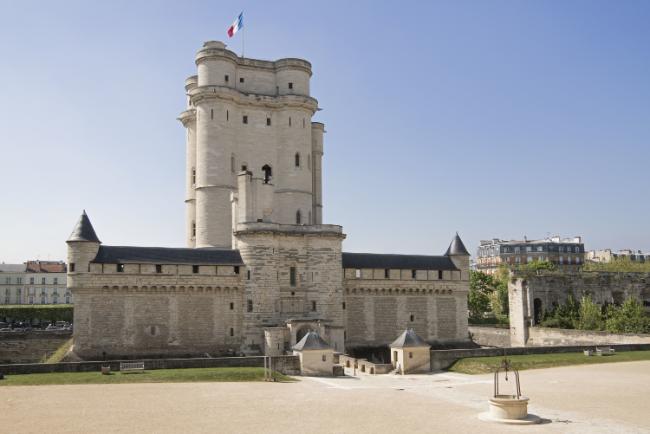Cursed Kings and the Real d’Artagnan: Discover the Secrets of the Château de Vincennes
Sponsored
On the outskirts of Paris, the impressive Vincennes castle has witnessed centuries of French history and served the reigns of several monarchs. But it also has had its fair share of dramatics with prison breakouts, royal curses and the real-life musketeers.
While the château de Vincennes served a central role in French history, standing proud as the power centre for many French monarchs, its own, personal history is a little more intriguing, from its links to d’Artagnan to a daring escape and a dash of mystery… Let’s dive in.
1. The cursed kings
Jacques de Molay was the last leader of the Templars, the infamous religious and military order. Arrested and imprisonment by order of king Philippe le Bel, Jacques du Molay undergoes a seven-year trial and torture before being sentenced to death in March 1314. Tied to the stake, he allegedly gave chilling final words and cursed Philippe le Bel as well as pope Clément V.
Giving shape and force to the legend, Pope Clement V died on April 20 1314 and King Philip le Bem died on the night of November 26 to 27 1314, probably following a stroke. But the curse continued and his three sons, Louis X le Hutin, Phillipe V le Long et Charles IV le Bel, all died young, one after the other, without leaving male heirs, thus extinguishing the line of direct Capetians. Coincidentally, all three of them died at the Château de Vincennes.

The Sainte-Chappelle of Vincennes © Jean-Pierre Delagarde / Centre des Monuments Nationaux
2. D’Artagnan’s castle
While Alexandre Dumas’ famous novel The Three Musketeers is a fictional work, it takes its inspiration from a very real story. Ideed, the order of the Musketeers did exist and was created by Louis XIII in 1622. T y were assigned to the personal protection of the king but they also took part in several military operations. It is also true that they all came from Gascony as Louis XIII’s father, Henry IV liked to surround himself with guard from his home region and Louis XIII upheld the tradition.
While Athos, Porthos and Aramis did not exist, D’Artagnan was a real mousquetaires. Charles Ogier de Batz de Castelmore, known as D’Artagnan thanks to his mother’s name became captain lieutenant of the first company of musketeers. He knew Mazarin, Anne of Austria and Louis XIV and served them loyally, particularly in the Château de Vincennes. In 1661, having become a trusted man of Louis XIV, d’Artagnan was responsible for arresting Superintendent Fouquet and locking him up for several months in the Vincennes dungeon.
An ongoing exhibition at the Château de Vincennes explores the art of tableware and costume in the time of d’Artagnan in the Sainte-Chapelle of the Château de Vincennes. Based on Dumas’ novel, the exhibition, through theatrical museography and costumed reconstructions, aims to immerse visitors in that era’s grandeur which witnessed the birth of les arts de la table and fashion.
A la table des Mousquetaires, until July 10th 2024.

Inside the keep © Jean-Pierre Delagarde / Centre des Monuments Nationaux
3. Prison break
At the time when the dungeon served as a prison, the Duke of Beaufort (first cousin of Louis XIV) managed to stage a spectacular escape. He was sentenced to five years for taking part in conspiracy to have the Cardinal Richelieu assassinated.
On May 31, 1648, the duke let himself slide along the wall surrounding the fortress, using a rope set by an accomplice guard. But it was too short so he had to jump the last meters (four in total) which separate him from the ditch. While soft grass did break his fall, he allegedly fainted upon landing though quickly came to and joined his accomplices waiting for him on horseback.

View of the chapel © Jean-Pierre Delagarde / Centre des Monuments Nationaux
Witness to France’s history
A royal manor house was first built in the castle’s current location in the 12th century, to cater to Louis VII, who wished to have a secondary home not too far from the capital. This turned out to be rather strategic since the property was conveniently close to Paris yet surrounded by thick wood and situated at the crossroads of major communication pathways of the time. The château was quickly used a place to govern as, later on, Louis XI began holding council meetings and running administrative affairs there.
The château was transformed during the Hundred Years’ War thanks to Charles V, who was the main instigator behind the building’s transformation from a comfortable and leisurely second home, to a fortified castle, a symbol of the monarchy’s strength and authority. In the 1380, the castle was the largest in Europe and boasted a 52-meter high tower. Various other additions were made throughout the years but the castle quickly became a safe haven for kings-in-trouble: after the assassination of Henry IV in 1610, his son, the future Louis XIII, sheltered there. In 1648, when the Fronde broke out, young Louis XIV came here to avoid the violence. The Sun King also made changes by ordering the construction of pavilions, le Pavillon du Roi and la Pavillon de la Reine, as well as gardens dotted with kiosks.
In 1740, the castle was made into a porcelain fabric and ten years later, it housed a military school. Nevertheless, the royal power was still at work in Vincennes since the large dungeon tower was being used as prison which held a few famous names such as the future Henri IV, Nicolas Fouquet, Diderot or the marquis de Sade.
After the Revolution, the chateau served a military purpose and was still used as a prison. During World War II, it was even the headquarters of the French military until it was occupied by German forces.
The châteaus is open to visit:
- From May 21 to September 22 -10 a.m. – 6 p.m.
- From September 23 to May 20 – 10 a.m. – 5 p.m.
For more information, visit www.chateau-de-vincennes.fr
Lead photo credit : The impressive keep standing tall © Jean-Pierre Delagarde / Centre des monuments na
Share to: Facebook Twitter LinkedIn Email
More in French castle, French history, monument of the month, secret France
Leave a reply
Your email address will not be published. Required fields are marked *






REPLY